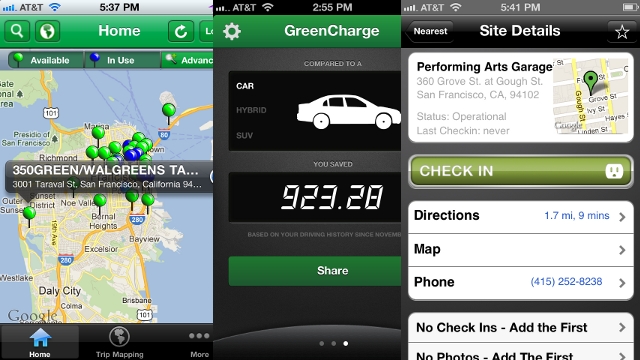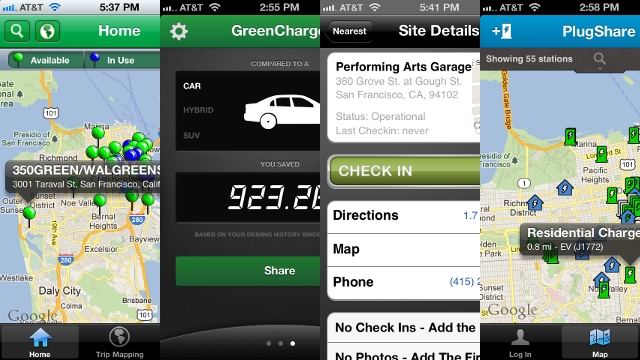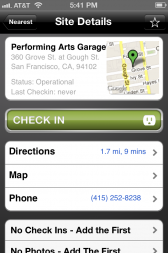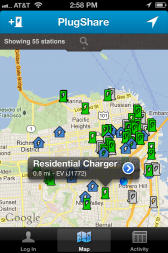
For most of the 20th century, the automobile represented a means to get away from it all—to disconnect from your daily worries and hit the open road. But in today’s hyper-connected world, the car has become another networked mobile device, delivering robust streams of communication and infotainment. The new networked car is perhaps best symbolized by the pure electric vehicle, which requires regular replenishments of grid-supplied energy. In fact, software developers are connecting car, driver, electric utility and charging station providers by creating mobile apps specifically designed to map locations of EV charging stations.
Using Multiple Apps to Find EV Stations
But like the pre-Google Internet—in which web queries were conducted using any number of different fledgling search engines—electric car drivers use multiple tools to find the closest place to plug in. “The problem isn't the apps. It's that you have to use multiple apps,” said Felix Kramer, a Berkeley-based advocate of plug-in electric vehicles, and an owner of both a Nissan Leaf and Chevy Volt. “Like so many other things these days, there's no coordination, so you need to cover your bases.”
The leading EV charging station apps and websites are Recargo, PlugShare, and Carstations.com. But in addition, the operators of charging networks, such as Coulomb Technologies and Ecotality, also provide apps to locate EV charging stations. And the electric car producers such as Nissan, Ford and General Motors, even serve charging station locations directly in the navigation systems of their vehicles.


